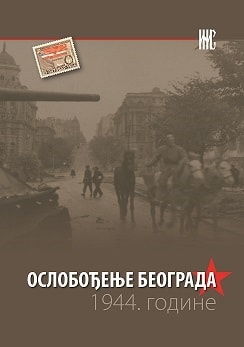Author(s): Nataša Milićević / Language(s): Serbian
Publication Year: 0
This paper, through the process of renaming urban toponymy, analyzes the impact of the ruling ideology in shaping the urban space in Serbia in the first years after the World War II. The renaming of old, bourgeois urban toponymy and the construction of new, communist one was carried out systematically and gradually, just as the new Yugoslav state and society was being built. The revolutionary government was aware of the symbolic radiation offered by urban area. Therefore, it was trying by renaming to adapt it to the symbols of the new Yugoslav state and provide another way for spatial and collective expression of the identity of the society. When renaming towns and streets, two main types of intervention were carried out. The first is related to the maintenance or restoring old names, and the other on the renaming of existing towns and streets. The government comprehended this kind of intervention in the urban space very seriously. This means that it legally regulated it and provided to a number of factors (the city government, the Ministry of Interior and the Ministry of Education, as well as the Communist Party) to participate and monitor the process of renaming. The government did not conduct extensive intervention in the renaming of cities and did not have that intention, because the old names, some of the ancient and medieval period or somewhat later time, were not in contradiction with the newly established value standards. It completely changed the names of only those cities that, in its opinion, had the dubious symbolic value, such as those containing monarchist words (Kraljevo or Caribrod) or they were ideologically problematic (Petrograd) and wanted to highlight the importance of some individuals of the Socialist Movement (S. Markovic and J. B. Tito). The renaming of streets was much more radical and expansive. It was carried out systematically and gradually. First they changed the names of streets in the city centres, then in the wider center, and then those on the periphery. New name of the street depended on its importance. The most important figures, events and concepts of the new Yugoslav state were given the most important streets. Instead of the various layers of civil street toponymy, the new layers of Communist street toponymy were created. These new layers symbolized the Yugoslav and international socialist and communist movement, the National Liberation War and revolution, Slavic rapprochement and the like. The names of streets that did not collide with just the aforementioned ideological values were not changed. The renaming of the streets up to 1948 had a striking ideological and political content and intention to break with inherited civil toponymy. After 1948, in particular after 1950, the need prevailed to regulate the parts in an urban area and to enable faster and easier their communication networking. Moreover, these are the streets that were on the outskirts of the city, and often did not have official names. With the renaming, an entirely new meaning to the urban area was establishing, and with a new meaning new symbols of representation of society and its values.
More...













